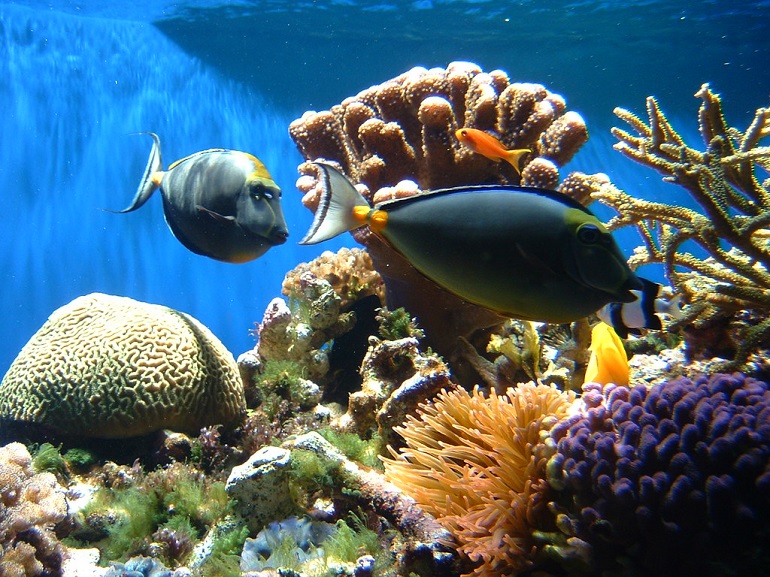There are only a handful of places on Earth that can be seen from outer space; the Grand Canyon, the Egyptian pyramids, and The Amazon River, to name a few. Would you be surprised to learn that coral reefs have also been photographed by astronauts? Specifically, Australia’s Great Barrier Reef.
A reef structure like this is a vital part of our marine ecosystem, which supports more than 25% of our ocean’s animal species, including fish, sea turtles, invertebrates, plants, birds, and marine mammals.
Most people don’t think about these secret underwater cities because these habitats are typically “out of sight, out of mind.” Unfortunately, for the more than 7,000 species of animals that call these magnificent structures home, their future hangs in the balance.
Close to three-quarters of the world’s reefs are in various stages of distress, and it’s highly likely that we will see more dramatic changes in our lifetimes if things don’t change soon. Read on to learn about what is happening to our treasured coral reefs.
Overview of the Coral Reef
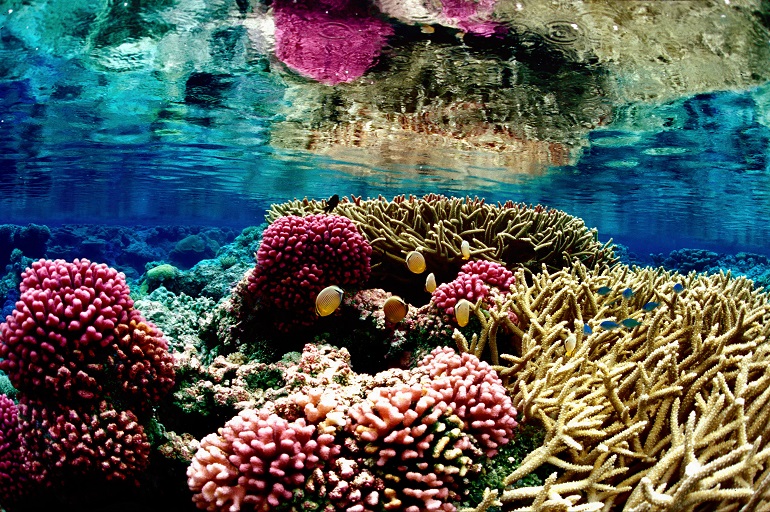
Coral reef ecosystems are the place to see and be seen for thousands of types of fish and marine animals; in fact, one in four call them home. Ecologically, they are the underwater version of the lush rainforests of the tropics. Both are teeming with life and can support the food web of our planet in a way that is unrivaled.
Reefs also protect the islands and continents that they surround, reducing the force of powerful currents and crushing wave action by as much as 95%. Without them, these exposed shorelines would erode quickly in tropical storms.
Aside from supplying a rich habitat for countless species and protecting coasts from erosion, they are also a huge asset to humans, providing food, jobs, and a break from reality.
Divers from all over the globe looking to escape the stresses of life can tell you there is nothing like the inner peace that comes from being immersed in the tranquil and colorful underwater world of a reef community.
Because of this, snorkeling and scuba diving have grown into huge industries over the years, supporting millions of people who depend upon tourism as a livelihood.
History
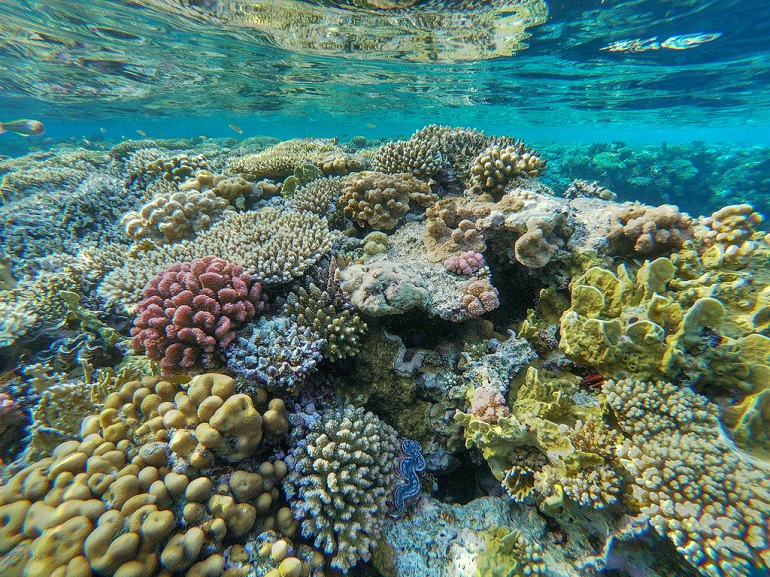
If you are already suspecting that reefs are one of the earth’s ancient species, you are correct. Fossil evidence shows that the first reefs were around long before the dinosaurs, nearly 500 million years ago. They differed from the coral reefs living today, most notably in the way they were constructed.
The original reefs ultimately fell victim to the mass extinctions of the earlier eras. For many of the species that date back to these prehistoric times of global warming, giant asteroids, and raging volcanic explosions, starting over would become the norm.
Fast forward 110 million years to the Devonian Period, when reefs started to appear again, built by very large clams that would anchor themselves to the sea floor in communities. Using their unusually large shells, these bivalves formed foundations like the coral reefs that would eventually follow.
These were still extremely tumultuous times, however, and the fire and brimstone that shaped our planet continued to wipe some species out while others evolved.
The reefs that are related to the coral reefs of today, began forming 25 million years ago. By that time, the sky had stopped raining fire, and the dust had settled long enough for life to slowly begin again.
How Are Coral Reefs Formed?
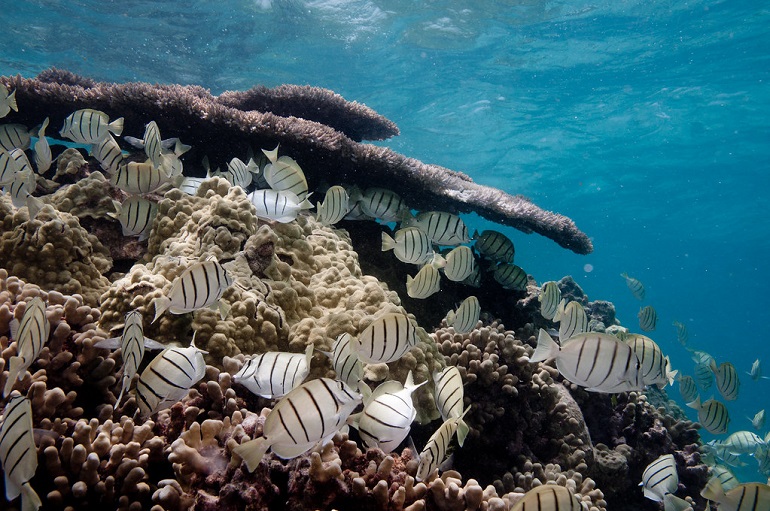
It is a common misconception that a coral reef is just an underwater rock wall. While limestone is part of its composition, a coral reef is a living structure consisting of tiny animals known as polyps, or stony corals, members of the phylum Cnidaria.
Polyps are related to jellyfish and sea anemones and range in size from small enough to fit on the head of a pin to as large as a basketball. With soft bodies and a network of stinging tentacles on top, they are the ones responsible for a reef’s construction.
Coral polyps are sessile, meaning they are permanently fixed to one place, making them the perfect species for the job since they can’t go anywhere. An up-close look reveals each one joined to the next by a thin layer of tissue.
They live in large colonies on the reef’s surface, where they contribute to its ever-expanding formation through their own respiration.
When polyps breathe, the carbon dioxide that they exhale combines with calcium and algae from the ocean to form a substance called calcium carbonate. This chalky composite or exoskeleton then attaches to the reef layer by meticulous layer.
As they continue to produce calcium carbonate, this skeletal layer grows into the hard corals that we think of when we imagine a reef, advancing upward and outward at a rate of several centimeters a year.
Coral Reef Description
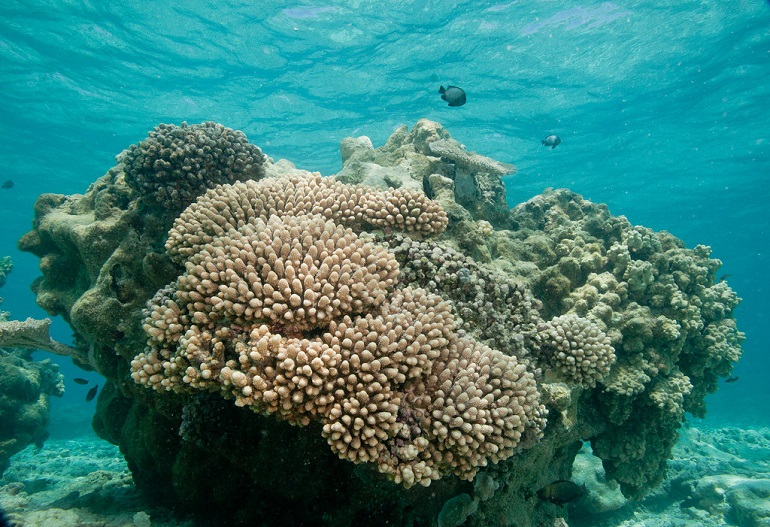
A reef in good health can have as many as 1,000 polyps per square foot! The reef’s surface is covered with them, gently waving their tentacles back and forth in search of food while anchored to the chalky foundations of the polyps that shaped the reef before them.
Most coral reefs are colorful habitats, loaded with bright eye-catching reds, greens, blues, and purples that attract divers and other fish. Some reefs are more vivid than others, and scientists attribute these brighter fluorescent pigments to be a defense mechanism against coral bleaching.
These underwater structures tend to develop differently, depending upon their location and other variables like water temperature, wave action, and access to sunlight. One thing that all healthy reefs have in common; they are magnets for thousands of other marine species.
Coral Reef Types
Most scientists agree that there are four different types of coral reefs: fringing, patch, barrier, and atoll, but there are some that leave patch corals off the list.
Fringing Reef
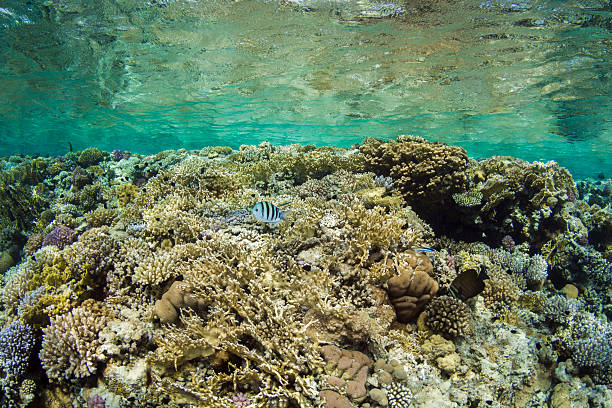
A fringing reef is the most common type, starting off in shallow water and growing away from the coastline. It is the youngest and, therefore in the earliest phases of development. As the name implies, this reef is on the “fringe” of the landmass that it protects, with a narrow, shallow body of water separating the two.
Barrier Reef
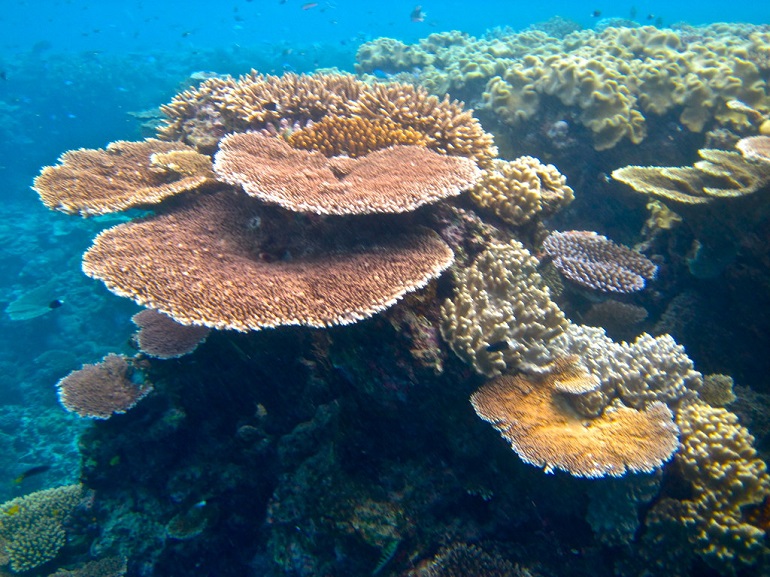
Barrier reefs, like fringing reefs, develop along the shoreline, with a deeper lagoon separating them from land. There are typically channels or access points which cut through the reef, connecting the open ocean to the calmer waters inside.
Because barrier reefs are often a collection of fringe reefs that joined together over time, they tend to be very long, like the Great Barrier Reef, which is 1,500 miles end to end. These reefs often present as a “barrier” to vessels trying to pass over them and have been the cause of many a shipwreck.
Atolls
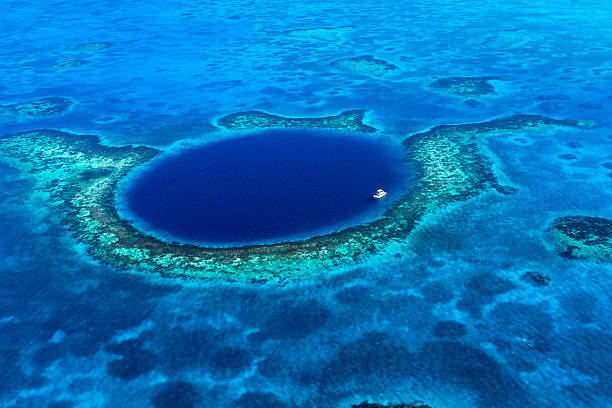
Atolls are circular structures that form around volcanic islands. A volcanic island takes millions of years to become established and is the result of a series of underwater eruptions. With each explosion, layers of the sea floor combine with lava to create an underwater peak that eventually breaks through the ocean’s surface as a small island.
Eventually, continued explosions cause the volcanic island to erode back into the water, leaving behind the atoll, a circular reef surrounding a deep lagoon in the middle of the ocean. For this reason, atolls are often called “floating islands.”
There are over 400 atolls in the world today, and nearly all can be found in the tropical waters of the Pacific Ocean.
Patch Reefs
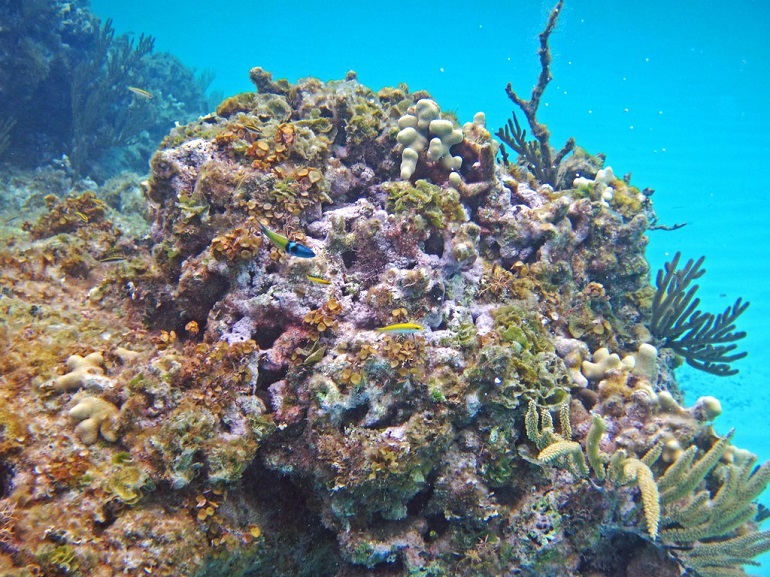
Patch reefs are found on continental shelves at depths of 10 to 20 feet. They tend to be smaller in size and more isolated, growing upwards but not quite reaching the water’s surface. These reefs are typically found around the Florida Keys.
Where Are Coral Reefs Located?
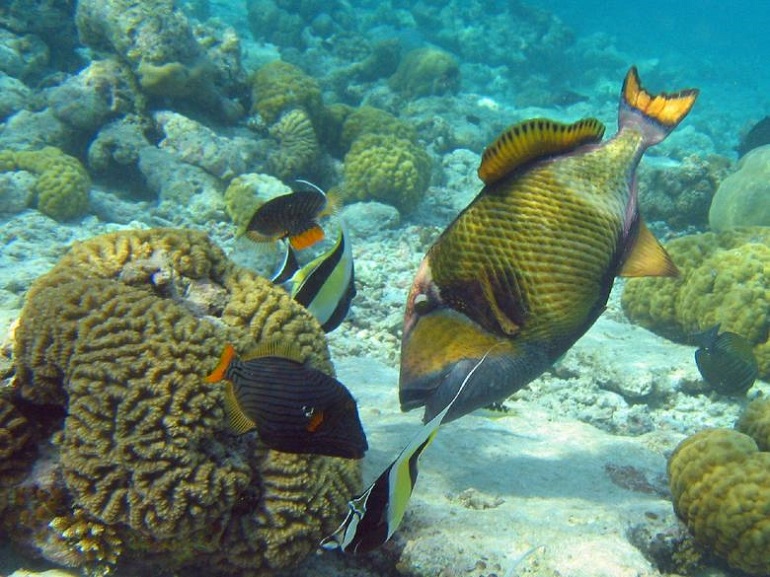
Most of the world’s coral reefs are found in tropical waters 30 degrees north and south of the equator. They adapt to varying depths of water; however, those that need a steady source of algae to grow thrive in areas with the best access to sunlight.
The Great Barrier Reef, one of the world’s most famous, is located off the northeast coast of Australia. Hawaii and Belize are also well known for their extensive reef systems. 90% of all reefs are found in the Pacific Ocean and the Indian Ocean.
Coral Reef Ecosystem
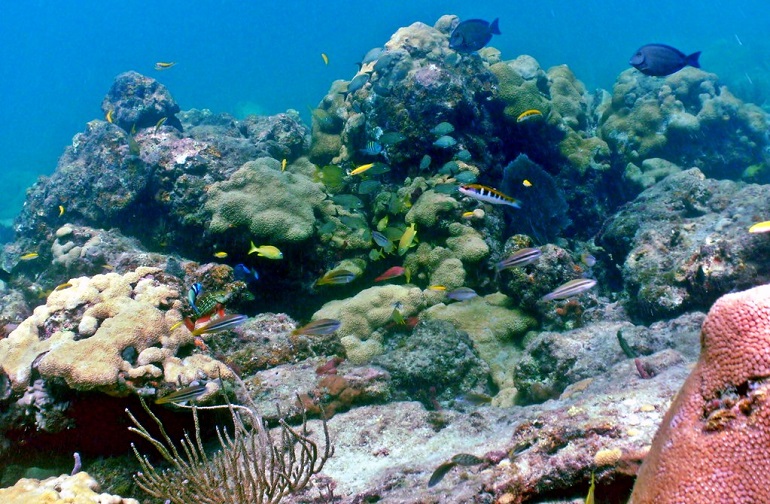
The variety of species that inhabit these ecosystems is staggering. A quick study of the food web reveals a remarkable system of checks that link the reef inhabitants together.
The stony corals provide the very foundation for all this diversity with their steady construction of the reef. The algae and soft corals are a food source for the herbivorous and coralliferous fish, who in turn keep the reef in good health by helping to shape it and by preventing the algae from building.
Mid-level fish feed on invertebrates like sea urchins or parrot fish, ensuring that they aren’t eating too much of the coral and algae. Finally, the top-level predators hang out to keep the mid-level species in check and their stomachs full, ensuring a balance of life that lead to healthy coral reefs.
Diversity of Coral Reefs
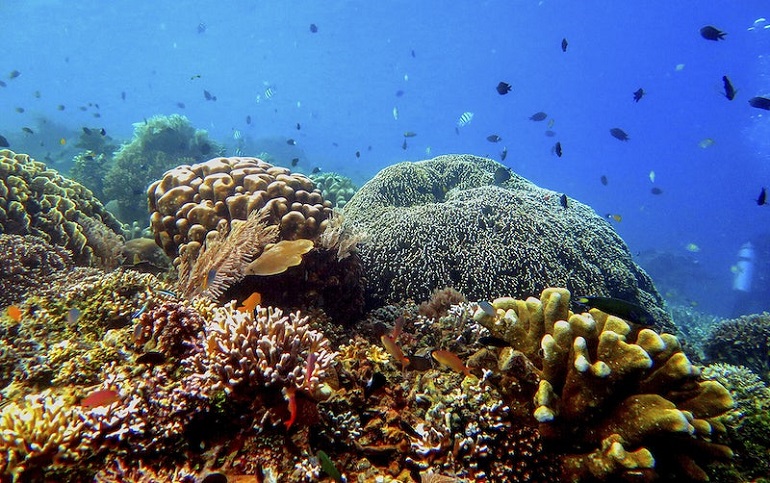
One might think that it would be challenging for so many different animals to inhabit the same space. Coral reefs exist because of this diversity. Having the right balance of species ensures that another does not become overpopulated and take over.
The abundance of nutrients is what keeps so many species from leaving coral reefs and is the direct result of the continual food loops of multitudes of animals that are eating, digesting, and eliminating.
It is an environment that allows animals to conserve energy because the reef provides them with a dependable food source. Like an underwater drive-through, with animals being consumed and remnants of life being recycled back into the ocean in the form of nutrients.
Coral Reef Zones
Well-developed reefs are typically spread across large areas, and for this reason, scientists have divided them into zones that highlight the individualized characteristics of each section.
The fringing reef, which grows close to shore, has a zone closest to the beach called the reef flat. This part is the most difficult place for coral to survive, as it is often exposed to longer periods of direct sunlight during low tides, not to mention changes in salinity and water temperatures.
Animals living here have adapted to the rougher conditions and may not resemble their cousins inhabiting deeper waters.
The next part is the reef crest which, as the name implies, is the highest part of the structure. The crest gets more sunlight than the other areas; however, it also receives the brunt of the ocean’s wave energy. Calcium carbonate deposits must be strong enough to withstand the relentless waves that pound this section.
Furthest from shore is the reef front, which grows along the ocean’s floor at greater depths than the other two zones. The shallowest parts of the reef front are where you can expect to find the most diversity. It has the perfect combination of sunlight and protection from crashing waves.
A little further out from the “front,” the reef is wider and flatter, an adaption to maximize the absorption of what little sunlight there is to reach the bottom. Studying the reef from end to end reveals an impressive example of this organism adjusting to survive despite a variety of conditions.
Coral Reef Characteristics
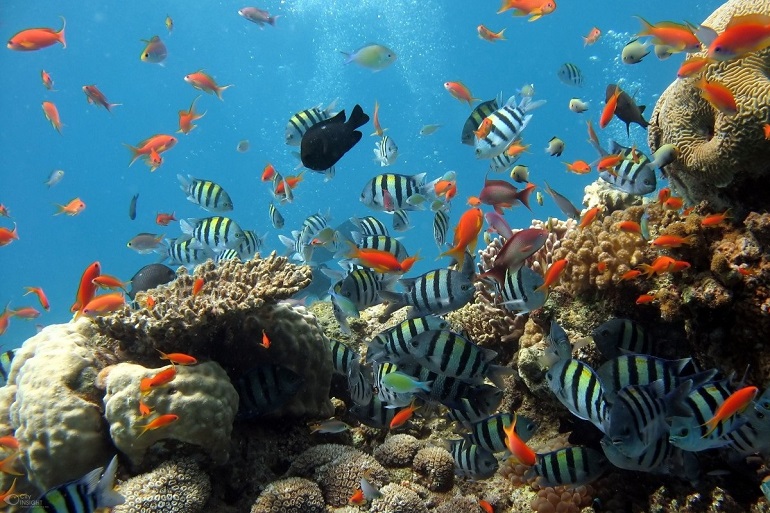
Coral reefs are one of the most diverse and productive ecosystems on the planet, providing a home for countless species of marine life. Let’s look at their salient characteristics:
Symbiotic Zooxanthellae
The stony corals responsible for creating our magnificent ocean reefs do this with the help of single-celled algae called zooxanthellae that live within their bodies. This symbiotic relationship between corals and the zooxanthellae is not unlike recycling.
By passing the necessary elements to each other during cellular respiration in continued loop, photosynthesis can take place, guaranteeing an unending supply of nutrients.
Skeleton
The skeletons produced by corals are an amazing network of formations that somehow manage to withstand the constant presence of ocean waves and currents. These skeletons do more than offer habitat and protection to animals and beaches; they can also give scientists an environmental time stamp of events in history.
Because these skeletons are formed by elements pulled from the water, such as traces of minerals, oxygen, and carbon dioxide, their core samples reveal what the world was like dating back to different time periods. Science has learned a great deal about changes to the environment and ocean acidification through these skeletons.
Reproduction of Coral Reefs
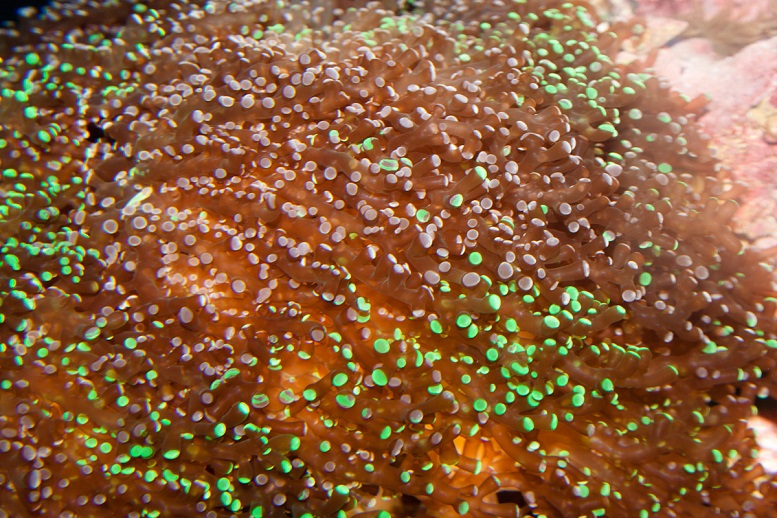
Most corals are broadcast spawners, meaning they release eggs and sperm into the water in unison. Scientists liken this event to a snowstorm, as the water is filled with millions of tiny particles hoping to make a connection. This massive release improves the likelihood of successful reproduction.
Other corals release bundles of sperm and egg together instead of separately. These tiny packages break apart over time and have the opportunity to combine with other corals to become planulae or larvae.
These reproducers are called brooders, and the process has its advantages in that the larvae settle faster, giving them a better chance of survival.
Reef Building Corals
All reef builders fall into the Scleractinia order, with over 800 different species of Scleractinian corals identified to date. Because they are at the mercy of their environment and must adapt to specific conditions, they come in many shapes and sizes and often have given names that resemble their likeness.
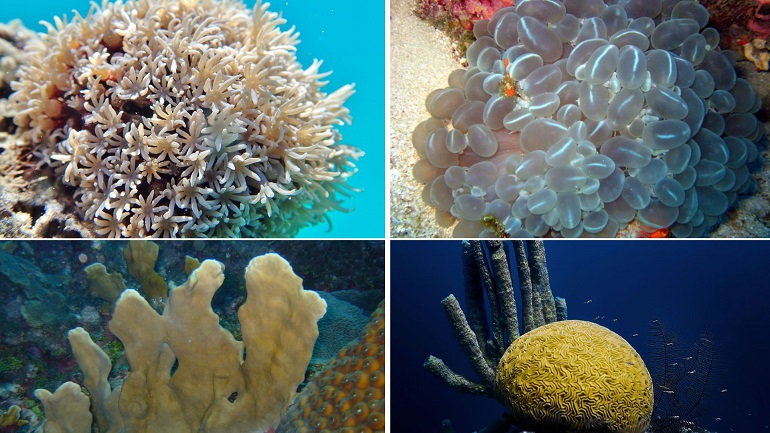
The most common are:
- Elkhorn
- Brain
- Bubble
- Staghorn
- Leaf
- Vase
- Venus
- Lettuce
- Organ Pipe
- Boulder Star
- Clubbed Finger
Other Reef Builders
While corals are considered the official architects of the coral reef, there are other animals that contribute to these structures. Some bivalves, like mussels and oysters, will attach themselves to its surface, adding their own bulk for reinforcement.
Sponges and algae also play a role by leaving their own skeletal calcium carbonate on reefs in a way that is similar to that of the corals.
What Lives in Coral Reefs?
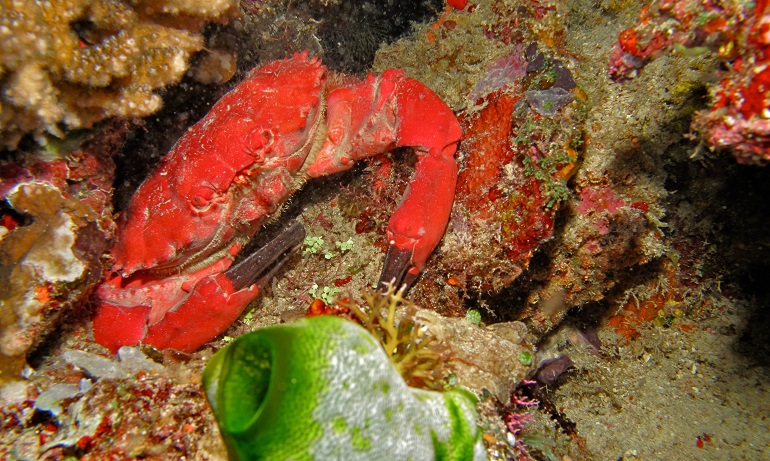
Imagine a place filled with animals of all kinds; marine mammals, fish, invertebrates, and birds that feed from above, not to mention the microscopic algae so tiny that you might not know they were there.
A place where animals look like plants, and plants look like animals. A place that seems to have an underwater rhythm of its very own that everything is moving to.
Healthy reefs are teeming with life from the bottom up. Primary producers like algae and sea sponges support the entire food web by producing more than they consume; omnivorous and carnivorous consumers like fish and turtles feeding on plants and small animals; and apex predators like sharks topping the list.
There are thousands of additional sea creatures that make up this richly cultivated system, some of the more recognized being lobsters, crabs, seahorses, anemones, urchins, manta rays, dolphins, and octopuses to name a few.
Benefits of Coral Reefs
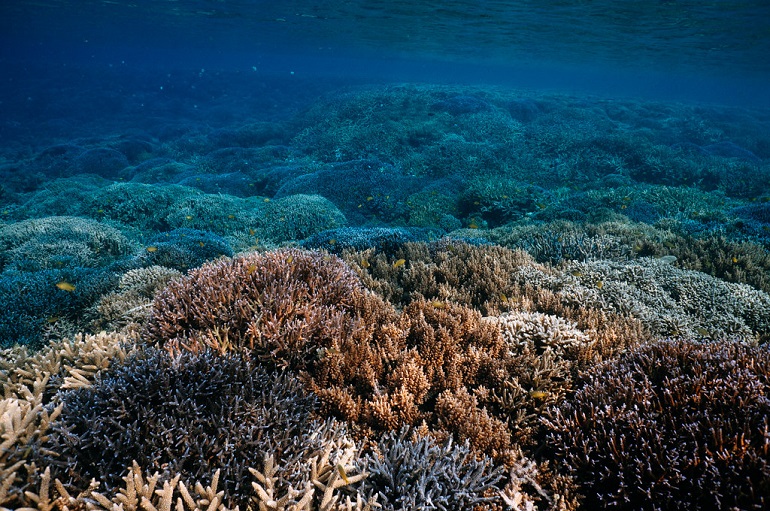
Coral reefs are the backbones of our oceans, supporting life both in and out of the water. Some of the many perks of having healthy reefs on our planet are:
- They produce more than half of the oxygen that we need to survive.
- More than 500 million people depend upon them for food.
- They support millions of jobs across the globe in the tourism industry, also providing economic benefits to sustainable fisheries.
- They are a major source of protection for our fragile coastlines, minimizing erosion.
- They provide one of the most bio-diverse habitats on our planet.
- Scientists have developed medicines from this ecosystem to treat diseases like Alzheimer’s, cancer, arthritis, and heart disease, as well as viral infections.
Threats to the Survival of Coral Reefs
Our actions as consumers often have negative impacts on our environment. Right now, coral reefs are in danger of losing their population faster than they can reproduce. It takes hundreds of thousands of years for a reef to grow and only a fraction of that time for human action to destroy it.
Issues like overfishing, land-based pollution, coastal development, and global warming are causing an alarming amount of damage to our ocean’s corals.
Other factors such as the removal for souvenirs, impacts with boats, ghost nets, and other marine gear, an increased amount of hurricanes, invasive species, and diseases are also contributing to their decline.
Coral Reef Protection
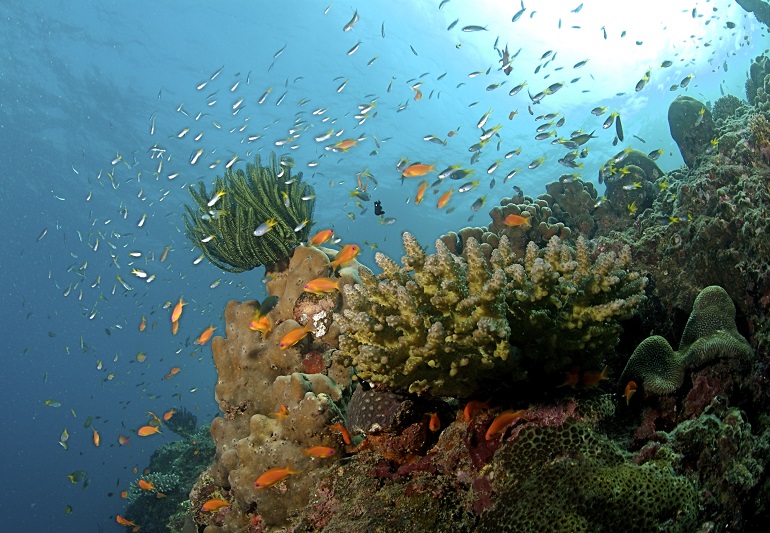
Current studies have shown that we have done an incredible amount of harm to our reefs already, but it is never too late to initiate changes that will make a difference in their survival.
It is time to recognize that we need to tread a little (and in some cases a lot) lighter to preserve our incredible coral reef systems and prevent them from becoming bleached. Conservation efforts are underway, and here is what you can do to help:
- Always enjoy the view from a safe distance when diving. Contact with corals, no matter how unintentional, can harm them. When boating, be aware of where you choose to anchor.
- If seafood is a part of your diet, make sustainable choices by using references like www.FishWatch.gov before you buy.
- Be mindful of chemicals and fertilizers that you use in your household; when they get into our water systems, they lead to algae blooms which suffocate our reefs.
- Work on reducing your carbon footprint by consuming less, walking more, and cutting back on water usage.
Coral Reef Restoration
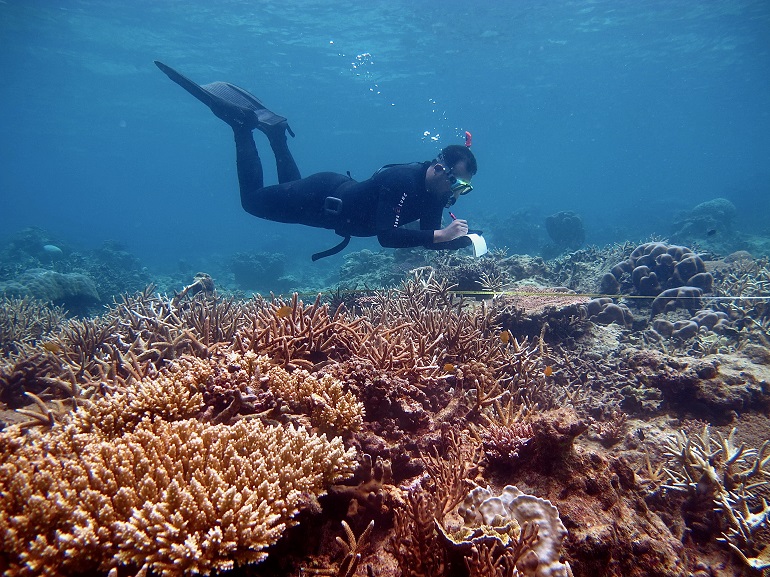
The more we learn about how priceless our reefs are, the more urgent it is that we take action immediately. Coral restoration is a delicate task, requiring both patience as well as ingenuity. Projects like the ones below are underway to try to reverse the damage that has been done to this priceless resource.
Coral Farming
This started off as a hobby for aquarium enthusiasts in the 1950s but has proven to be a way to successfully restore damaged reefs. Corals are carefully propagated in labs and eventually transferred to floating nurseries until they are ready for transplant on the ocean floor.
Creating Substrates
Making artificial foundations that mimic the reef’s base gives young coral a base to attach to when they are beginning to form. The promise of protection that these man-made structures offer attracts other marine life to the area as well.
Relocation
Occasionally used in an area that needs to be dredged, careful relocation of a reef can save it from suffocating during this stressful event of sand, mud, and other particles flying every which way.
Heat Tolerant Symbionts
With climate change being a factor that gets harder and harder to ignore, scientists are battling rising ocean temperatures by using heat-tolerant corals in their efforts to restore these habitats.
Invasive Algae
Algae blooms can quickly suffocate reefs, and in the past, divers have tried to carefully free a reef from these “carpets” by hand. A better method was discovered, using a gentle handheld underwater vacuum to remove excessive coralline algae.
Micro Fragmentation and Fusion
This is an interesting approach that separates corals using precision tools and placing them in a protected environment where they multiply into larger colonies, then fuse back together.
Conclusion
As you can see, the value of the coral reef is far more than meets the eye, and the alternatives to living without this ecosystem are hard to imagine. Scientists are already taking what they have learned about their unique characteristics to develop strategies that could help them adapt to the changes in their environments.
Time will tell if these efforts to protect coral reefs will be successful.
You can be a part of the solution to coral survival by adopting some different habits; it won’t seem like an inconvenience once you try it.
Making environmentally responsible choices and recognizing the need to share the planet with other species could be the difference between a world full of resources for generations to come or more mass extinctions. We really can’t afford to lose these diverse ecosystems.


